Going Places
I recently sat in front of a guy wearing sunglasses on an airplane. He was reading a book called Cashflow Quadrant.
Fundamental rights revisited
I saw a teaser for an upcoming story on gasoline prices on a local news station. The clip showed a guy at a gas station saying: "Yeah, I heard gas is going up to $5 or $6 a soon." He had frosted tips, a sweet striped shirt, and silvery see-through ultratrendy sunglasses. We've taken this notion of freedom of the press way too far.
Here Comes The Rain Again, or: Post-Oil Middle East, Part II
This article begins like so: “An SR75 million project to induce artificial rains by injecting and seeding moisture-heavy clouds will be launched before the end of this year. The successful test run carried out in the Asir province last summer encouraged the authorities to design a national artificial rain project to cover all regions of the Kingdom, Naif Selhu, director of environmental awareness at the Presidency of Meteorology and Environment (PME), said here yesterday.”
The Palms, or: Post-Oil Middle East
Dubai via Archinect, Los Angeles Times and The New Yorker, or: Post-Oil Middle East, Part III
Ski Dubai, or: Outside-Inside
Dubai Update
The Palms, or: Post-Oil Middle East
Dubai via Archinect, Los Angeles Times and The New Yorker, or: Post-Oil Middle East, Part III
Ski Dubai, or: Outside-Inside
Dubai Update
History's Greatest Cad
luridtransom would like to recognize the 35th Anniversary of the Flashman Papers and express our utmost gratitude to George Macdonald Fraser, Editor of the Flashman Papers.
Marketing 101
Whose idea was it to can Melissa Stark and the rest of the hot sideline reporters and replace them with fat chicks?
The Palms, or: Post-Oil Middle East
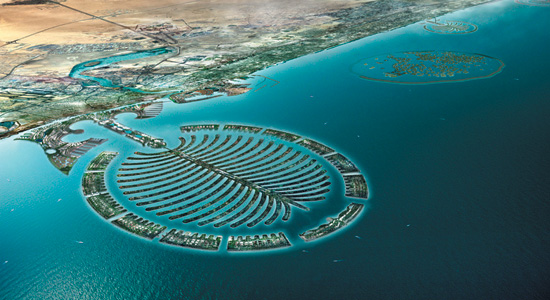
Part Spiral Jetty, part real estate developer's wettest wet dream, the three Palmettes of Jevel Ali, Jumeirah and Deira will jut out from the coast of the United Arab Emirates, forming arboreal archipelagos that will soon provide the perfect setting for luxury hotels, villas, townhouses and a killer whale stadium!
At first it sounds too much of a dream, soon to be quashed early on in the game for lack of financial backers, but this is after all the UAE, home of Sheikh Mohammed bin Rashid al-Maktoum, or “Sheik Mo,” the builder-developer-ruler extraordinaire. No scheme is too monumental or too preposterous for someone so intent on transforming his desert state into a tourist mecca. The post-oil era is looming ahead; no one can afford to dismiss the lessons from post-phosphate Nauru. So in other words, construction continues unabated.
And if Michael Jackson is of any indication, which is unlikely but let's pretend nevertheless, it's only a matter of time before this emirate becomes the Monaco of the Persian Gulf (with a little dash of that Disneyland sensibility).
The Palms
The World
Here Comes The Rain Again: or, Post-Oil Middle East, Part II
Dubai via Archinect, Los Angeles Times and The New Yorker: or, Post-Oil Middle East, Part III
Ski Dubai
Dubai Update
Ave Maria, Florida

Not wanting to be outdone by the Scientologists, Domino's Pizza founder Tom Monaghan is developing a Catholics-only enclave in Florida to accompany a new Catholic university. The town will look no different from the average ex-urban development: dendritic street system, cul-de-sacs, artificial lakes (in Hurricane-prone Florida?), and a town center partly inspired by New Urbanism (with a major dose of Salt Lake Temple Square; i.e., though a public space, your civil liberties will be curtailed).
There will be, of course, some major departures from the norm. Says Tom Monaghan:
We're going to control all the commercial real estate, so there's not going to be any pornography sold. We're controlling the cable system. The pharmacies are not going to be able to sell condoms or dispense contraceptives.
It's surveillance in the service of religious orthodoxy and as expressed in landscape form, a hybridization of Rome and Ground Zero that I'm quite giddy to see take shape. But even if Tom Monaghan's agenda does not come to fruition, as there are several legal issues that need to be addressed, there is that first implementation of the Rural Lands Stewardship Program to pique interest.
“An incentive-based system, Rural Stewardship allows a landowner to obtain credits for protecting lands proven to support natural resources and agriculture, then to utilize those credits in areas identified as suitable for development. Importantly, the number of credits earned is commensurate with the environmental significance of the land, so property owners are more highly rewarded for protecting more valuable lands.”
Ave Maria, Florida
Rural Lands Stewardship Program
Litter-Free Landscapes and The Politics of Pollen
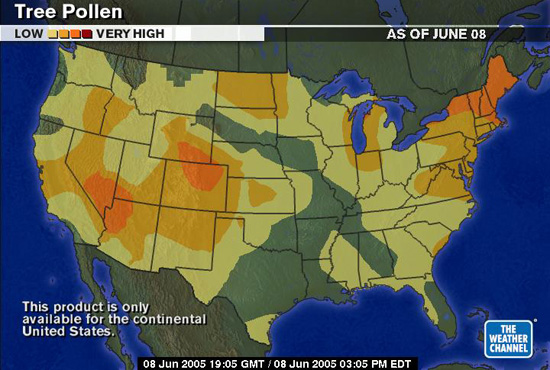
It would be difficult to dispute the benefits of urban trees when it comes to air quality and public health, but Thomas Leo Ogren would like to interject.
Allergy problems are worse today than ever before in our lives. Deaths from asthma continue to climb each year at an alarming epidemic rate.
And why is that?
In our urban landscapes we now have the most manipulated kind of city forest ever seen. In the past twenty years landscapers have grown inordinately fond of using male trees. In dioecious species (separate-sexed) there are separate male trees and separate female ones. Female trees and shrubs do not produce any pollen, ever, but they do produce messy seeds, fruits, old flowers, and seedpods. Landscapers and city arborists consider this female byproduct to be "litter", and they don’t like to see it lying on our sidewalks.
As a result we now have huge tracts of these litter-free or 'seedless' landscapes in our cities. What these actually are, of course, are male clones. As males their job is to produce pollen, and that they do! Even though in many cities we have less total vegetation than we used to, we have more pollen in our air now than ever before.
It's the same old culprits: municipal budgetary restraints and culturally constructed views of Nature, which are in this case, pristine, uniform, certainly not messy, and definitely not variegated.
In nature separate-sexed plants are usually about 50/50. Half of them are male and half are female. The female plants catch pollen from the air, remove it from circulation, and turn it into seed. Female trees are nature’s pollen traps, natural air-scrubbers.
In our modern cities though, female trees and shrubs are rarely used any longer. Of the five most available street trees for sale now, four of the top five are male clones.
Because no one bothered to consider the effect of the pollen from these male trees, we now have many elementary schools, ringed with male shade trees, and full of asthmatic children. Pollen counts exceeding sixty thousand grains of tree pollen per cubic yard of airspace have been found in elementary school yards. What does this mean? Simply, it means that on these playgrounds, every child there is inhaling several thousand grains of allergenic pollen with each breath of air they take! And people are surprised that childhood asthma is so common now?
The False Forest
MILF:02 Spatializing the Marvelous: The Musicals of Busby Berkeley

The plots are inconsequential. The reason to see these movies are the spectacular musical numbers, Hollywood's secular reinterpretation of Michelangelo's Genesis and Last Judgement frescos in the Sistine Chapel, directed and choreographed by Busby Berkeley.
Surely no one would be able to resist watching dancing skyscrapers; gravity-defying pianos in architecture-less, scale-less spaces; eroticized bodies writhing in pastoral landscapes like Michelangelo's damned souls; Depression-era New York; a hotel filled with pre-Code connubial flesh; anti-Taylor spatial organization; and phantasmagorical stage settings that only Matthew Barney seems fit to appropriate.
The Kid from Spain (dir. Leo McCarey, 1932)
“But We Must Rise” and “Oh, What a Perfect Combination”
42nd Street (dir. Lloyd Bacon, 1933)
“Shuffle Off to Buffalo,” “Young and Healthy,” and “42nd Street”
Gold Diggers of 1933 (dir. Mervyn LeRoy, 1933)
“Pettin' in the Park,” “Shadow Waltz,” and “Remember My Forgotten Man”
Footlight Parade (dir. Lloyd Bacon, 1933)
“Honeymoon Hotel,” “By a Waterfall,” and “Shangi Lil”
Dames (dir. Ray Enright, 1934)
“I Only Have Eyes For You” and “Dames”
Gold Diggers of 1935 (dir. Busby Berkeley, 1935)
“The Words Are in My Heart” and “Lullaby of Broadway”
MILF:01 Figures in the Field
MILF
MILF:03 Nanoscapes
MILF:04 The World
MILF:05 “The Best Things In Life Are Free”: Selections of Feature Films from the Internet Archive
MILF:06 Thick City
Edible Estates

Edible Estates pits Thomas Jefferson against...Thomas Jefferson! It's the farm against the lawn, arguably the two most indelible landscape expression of Jeffersonian democracy.
Edible Estates proposes the replacement of the American lawn with a highly productive domestic edible landscape. Food grown in our front yards will connect us to the seasons, the organic cycles of the earth and our neighbors. The banal lifeless space of uniform grass in front of the house will be replaced with the chaotic abundance of bio-diversity. In becoming gardeners we will reconsider our connection to the land, what we take from it and what we put in it. Each yard will be a unique expression of its location and of the inhabitant and their desires. Valuable land will be put to work.
It's the heroic farmer vs. the consumerist suburban dweller, Thoreau vs. modernity. Who will come out victorious? Stay tuned.
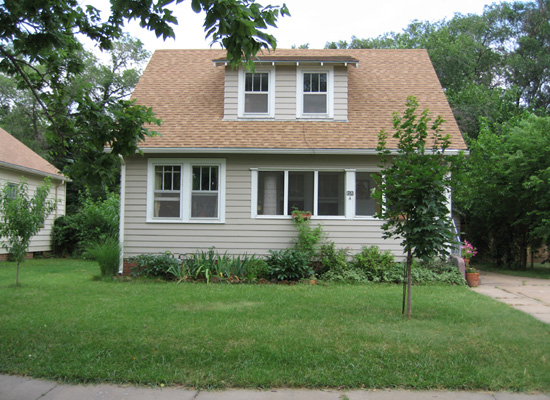

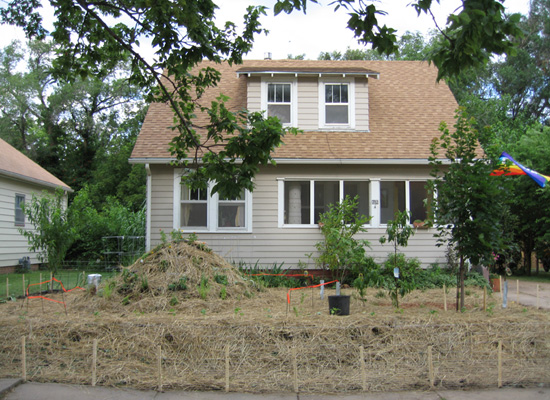
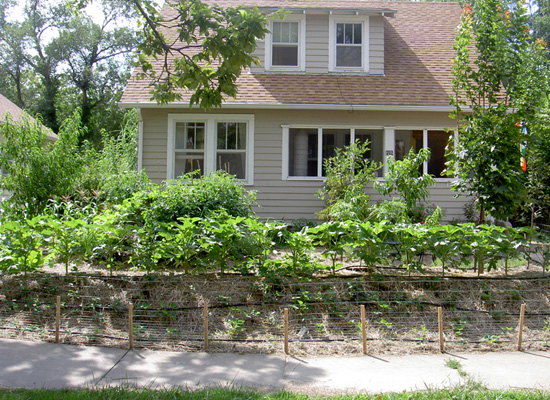
POSTSCRIPT #1: For the second Edible Estate, Fritz Haeg chose a site owned by the Foti Family in Los Angeles. And then The New York Times came for a visit. (See comments for the full text.)
POSTSCRIPT #2: The Edible Estate now in book form.
Edible Estates
Prunings V

On transit spaces. Web retrospective of Bauhaus Kolleg V.
On American landscape and architectural design...according to Harvard orthodoxy.
On dunes, bogs, forests, deserts et al. from the American Environmental Photographs. Another collection from American Memory, Library of Congress.
On wind farms. Paul Gipe will be your guide.
On gardens and gnomes.
On swimming holes, a guide to disused quarries, waterfalls, hot springs, and country ponds, and yes, that sylvan patch of Arcadia.
On natural hazards, a huge index of disaster websites from the Natural Hazards Center.
Silent Auction
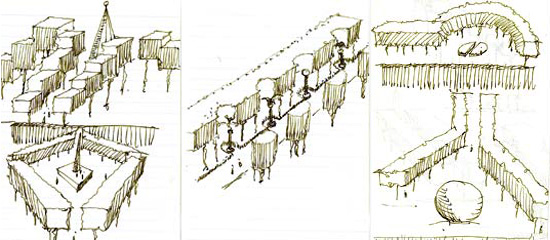
Normally we're averse to this sort of things. When something is offered for a price, there is little desire here to blog about it. Of course we're not oblivious to the realities of the profession and fully recognize the financial requirements in providing resources for free. So we'd like to turn your attention to the Silent Auction at the ASLA Annual Meeting on 7-9 October 2005. The proceeds will support the development of The Cultural Landscape Foundation's free (truly a most glorious word!) film archive, Landscape Legends: Documenting Landscape Architecture in America, which will feature videotaped oral history interviews with practitioners who have played a key role in shaping the profession and the American landscape.
Some of the items are your garden variety project detritus. In a comical lapse of imagination, Michael van Valkenburgh, Peter Walker, and Cornelia Hahn Oberlander submitted items found on their office floor. (MUST KEEP SAYING: It's all for a good cause.) Fortunately, the rest are not merely beautiful, they reflect the artist's design philosophy. Laurie Olin's watercolors are phenomenal, and Peter Osler's photographs of landscape in the process of submission are truly marvelous. Richard Haag's illicit photograph of the 52nd reconstruction of the main Shinto shrine is not an Ansel Adams, but the admission of a supposed questionable provenance makes it quite personal and rather precious in a way that offering a simple project drawing does not but rather laughable. (It's all for a good cause.)
My favorites are James van Sweden's portrait of Roberto Burle Marx and Todd Eberle's portrait of Dan Kiley, rare insights into how artists see other artists. (Is there a portrait of Ian McHarg by Martha Schwartz or vice versa for bid?) They are rather engaging; we seem to be eavesdropping on their private conversation. Anyone who bids exhorbitantly on these should not feel shortchanged.
Geological Investigation of the Alluvial Valley of the Lower Mississippi River, Part II
Simply because they're truly awesome, here are two more maps from Harold N. Fisk's 1944 Report. I'm a huge fan.
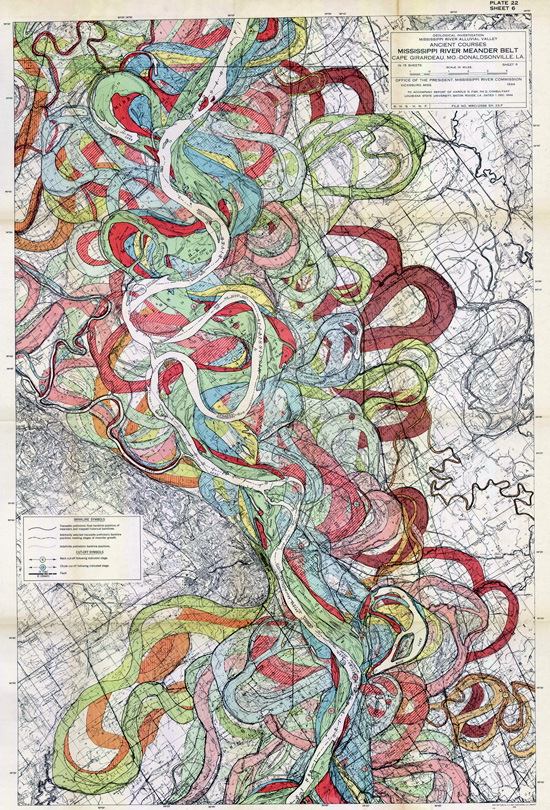
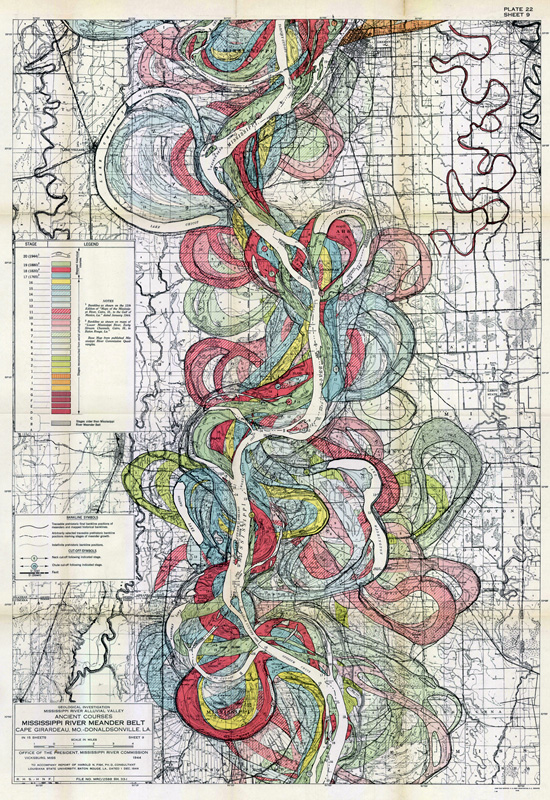
One wonders if the Army Corps of Engineers will ever learn that treating rigidity and permanence as design orthodoxy in a landscape where instability and suppleness are supreme can only lead to catastrophic consequences, no matter how much federal money are pumped into their projects. Perhaps they have, but I see little evidence of this. And to think that India and Bangladesh, in their attempts to control the Ganges and Brahmaputra, are looking to the corps for ideas and models.
Lower Mississippi Valley - Engineering Geology Mapping Program
Part I
Part III
Part IV
Part V
Alluvial Porn


One wonders if the Army Corps of Engineers will ever learn that treating rigidity and permanence as design orthodoxy in a landscape where instability and suppleness are supreme can only lead to catastrophic consequences, no matter how much federal money are pumped into their projects. Perhaps they have, but I see little evidence of this. And to think that India and Bangladesh, in their attempts to control the Ganges and Brahmaputra, are looking to the corps for ideas and models.
Lower Mississippi Valley - Engineering Geology Mapping Program
Part I
Part III
Part IV
Part V
Alluvial Porn
Urban / Rural / Wild
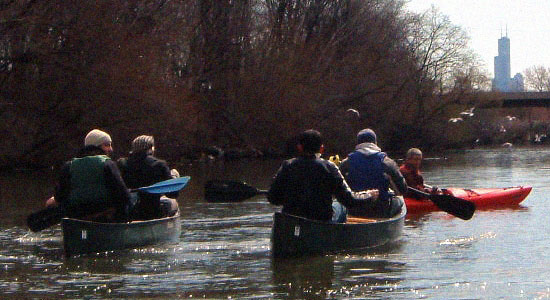
Now at the I space Gallery in Chicago through October 22, 2005 and curated by Sarah Kanouse and Nicholas Brown, both of whom were involved in last year's Walking as Knowing as Making symposium at the University of Illinois at Urbana/Champaign. Fortunately to most, Urban / Rural / Wild has an uncharacteristically extensive web presence. And like its symposium predecessor, the website contains a treasure trove of links and bibliographical sources. People can participate by submitting similar online resources.
“The exhibition Urban, Rural, Wild presents work by eight artists addressing the complex historical and contemporary relationship between metropolitan Chicago and downstate Illinois. The state's flat and fertile expanse of prairie offered a bounty of resources for nineteenth-century urban development and presented few physical obstacles to immense twentieth-century sprawl. Today, Chicago stands in apparent opposition to its surroundings, a “Third Coast” whose deep blue color on electoral maps is conspicuously surrounded by a sea of red. City officials and developers salivate over latte liberals, high-tech workers, and urban entrepreneurs who seem more at home in any coastal city than anywhere south of I-80. Indeed, contemporary, global Chicago may well be linked more closely to London, Mumbai, and Mexico City than to Loda, Makanda, or Farmer City. Nevertheless, artifacts of corn remain amid the skyscrapers, brick bungalows, and three-flats: a vast network of semi-decayed rail lines; towering, concrete grain elevators; and the computerized abstractions of crops and livestock at the Chicago Board of Trade. Urban, Rural, Wild presents just a few preliminary investigations into the interplay of culture and nature in our region and seeks to generate broader and more sustained consideration of the environmental and social consequences of the country/city dialectic in Illinois and throughout the Midwest.”
Aristotle's Diary
Is life worth living if you don't have a cell phone with digital video recording capabilities?
Fashionistas
As a unit, Ohio State's linebackers have the most fashionable haircuts in the Big 10, if not the whole country.
Bait & Switch
What exactly is so express about Houston Metro's Route 102 Bush IAH Express bus route? It makes no less than SIX stops between downtown and the airport. Public transportation sucks. Except for monorails, of course.
Trustbusting
I'm not afraid to admit it: I'm a Nick Lachey fan. But I don't want to see Nick Lachey on College GameDay. ESPN, your Vesuvius is coming.
Big Time?
luridtransom has caught the attention of the collection agency bloggers. (See comment under Check your facts, AP). Give me a phat beat.
Subscribe to:
Posts (Atom)